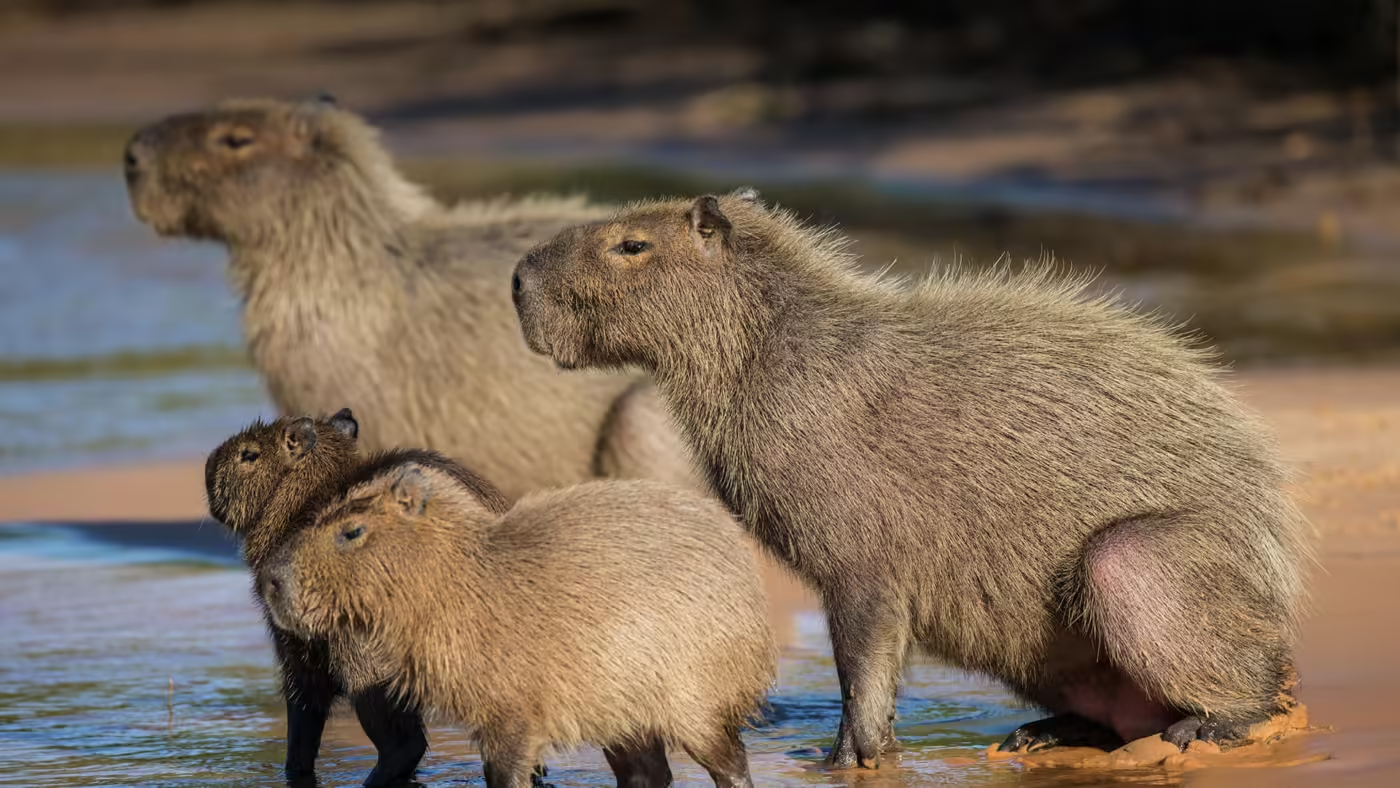Many people think the capybara is from Africa, but it’s not. These huge rodents call South America home, especially the Pantanal region of Brazil. They also live in parts of Colombia, Venezuela, Peru, Argentina, and Uruguay. Being the biggest rodents alive, they love the water and live near rivers, lakes, and swamps. Key Takeaways Capybaras […]
1. The Majestic Lion
The African lion, known as the “King of the Jungle,” is one of the most iconic animals of the savannah. With a golden mane that shines in the sun and a powerful roar that echoes for miles, lions are apex predators and social animals, living in prides.
Key Features:
- Golden fur with darker manes in males.
- Lives in family groups known as prides.
- Apex predators, often hunting large herbivores.
2. The Graceful Giraffe
With its towering height and spotted coat, the giraffe is the tallest land animal on Earth. Its long neck allows it to reach high branches, feeding on leaves that are out of reach for other herbivores.
Key Features:
- Can grow up to 18 feet tall.
- Has a unique pattern of spots on its fur.
- Uses its long neck to reach treetop leaves.
3. The Mighty Elephant
African elephants are the largest land animals, easily recognized by their massive size, large ears, and impressive trunks. These gentle giants are known for their intelligence and strong family bonds.
Key Features:
- Large ears used for thermoregulation.
- Highly intelligent and social animals.
- Use trunks for eating, drinking, and communicating.
4. The Elusive Leopard
The African leopard is a stealthy and powerful predator, known for its beautiful spotted coat and ability to climb trees. It often drags its prey into the branches to keep it away from scavengers.
Key Features:
- Spotted coat for camouflage.
- Excellent climbers.
- Solitary and elusive hunters.
5. The Striped Zebra
Zebras are known for their distinctive black and white stripes, which act as a natural camouflage in the savannah. These herbivores are social animals and are often seen grazing in herds.
Key Features:
- Unique stripe patterns.
- Social animals living in herds.
- Prey for lions, hyenas, and other predators.
6. The Swift Cheetah
Cheetahs are the fastest land animals, capable of reaching speeds of up to 70 mph in short bursts. Their slender bodies and long legs are built for speed, allowing them to chase down prey with incredible agility.
Key Features:
- Top speed of 70 mph.
- Slim body and long legs.
- Hunts mainly by sight and speed.
7. The Playful Meerkat
Meerkats are small, social mammals that live in large groups called mobs. They are often seen standing on their hind legs, keeping watch for predators while others forage for food.
Key Features:
- Small mammals that live in colonies.
- Known for their upright stance.
- Highly social and communicative animals.
8. The Powerful Rhinoceros
The African rhinoceros is known for its thick, armor-like skin and prominent horn. Despite their bulky appearance, they are fast and agile, capable of running at surprising speeds.
Key Features:
- Thick skin and large horn.
- Herbivores, feeding on grass and shrubs.
- Solitary animals, with strong territorial instincts.
9. The Agile Antelope
There are many species of antelope in Africa, each with its own distinct traits. Known for their speed and agility, antelopes are a favorite prey of large predators.
Key Features:
- Graceful and fast runners.
- Variety of species with unique horns.
- Live in herds, often found in open plains.
10. The Nile Crocodile
One of Africa’s most feared predators, the Nile crocodile can be found lurking in rivers and lakes. These reptiles are powerful hunters, capable of ambushing and taking down large prey with their strong jaws.
Key Features:
- Powerful jaws and sharp teeth.
- Lives in freshwater habitats.
- Ambush predators, waiting for prey to come close.
You can use these descriptions as captions or in content about African wildlife.

